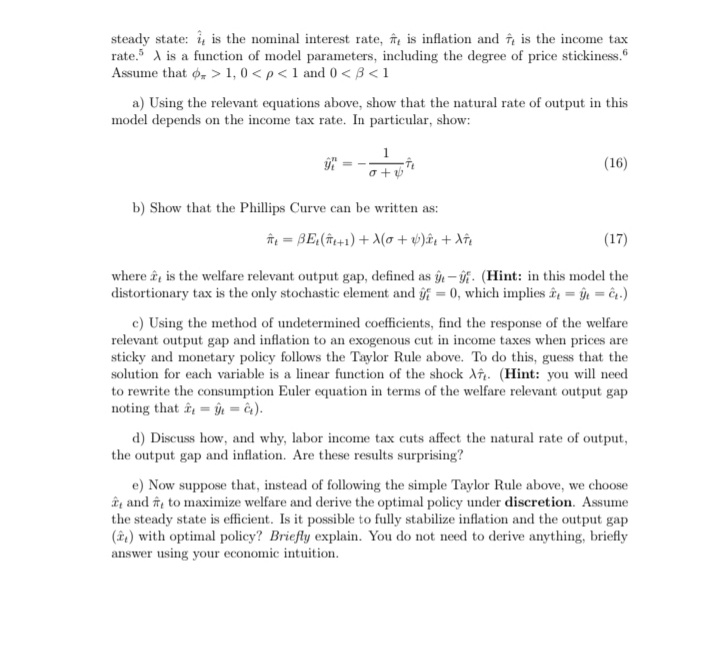
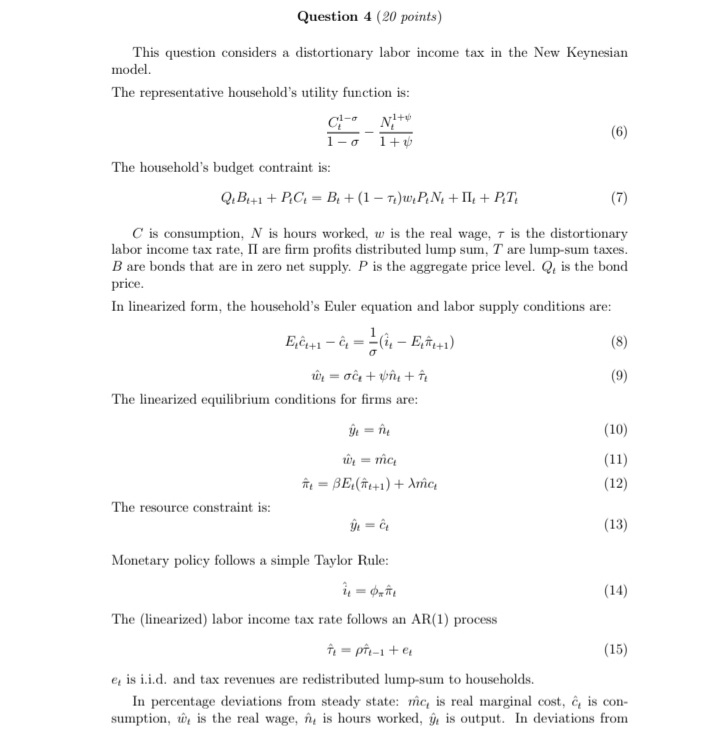
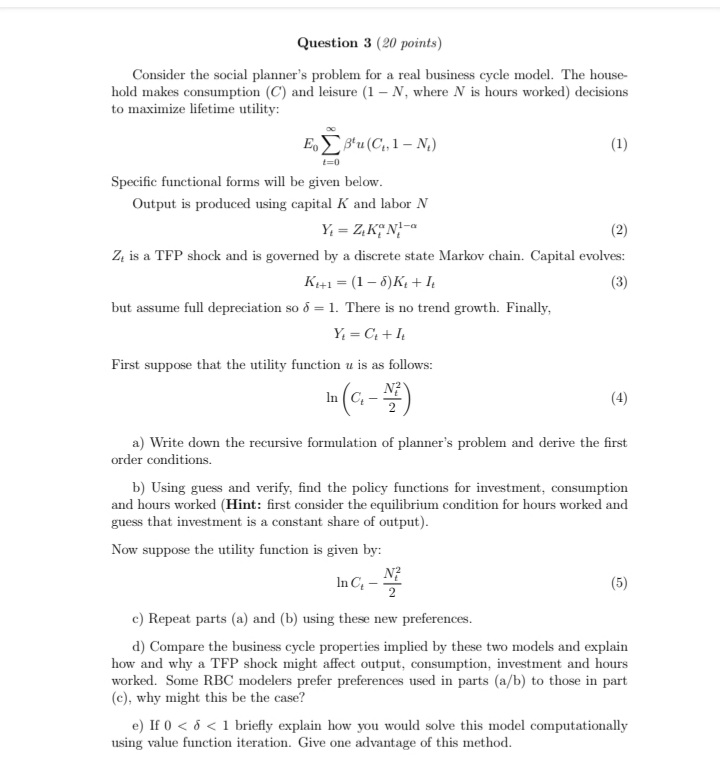
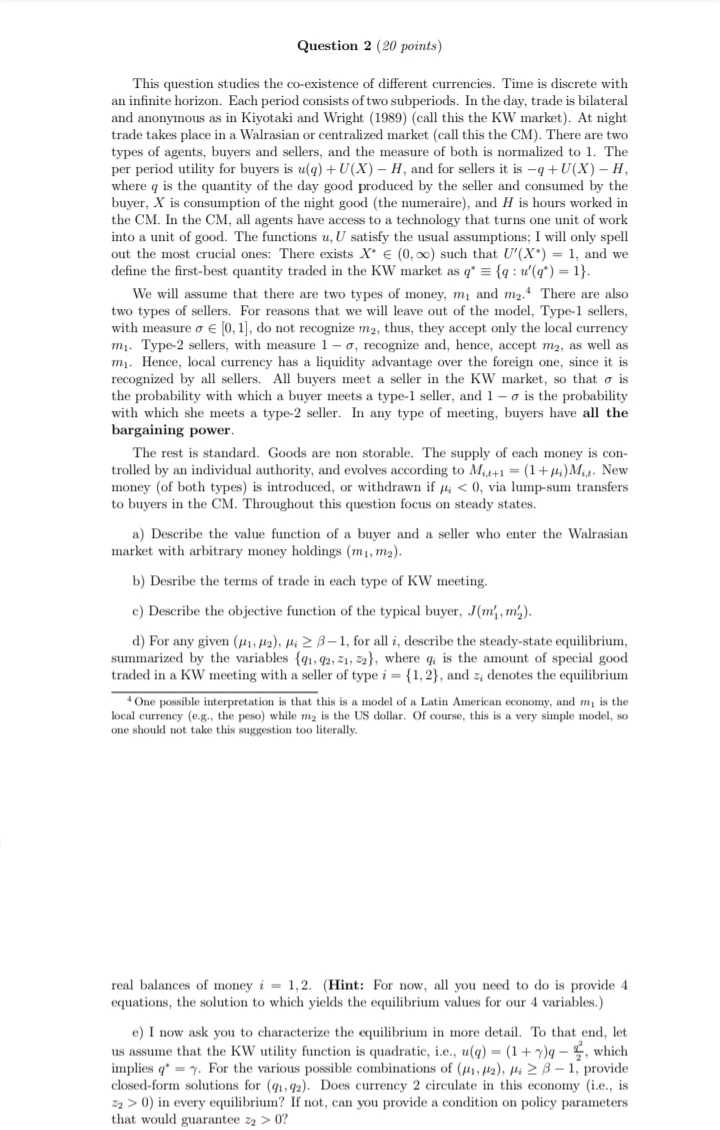
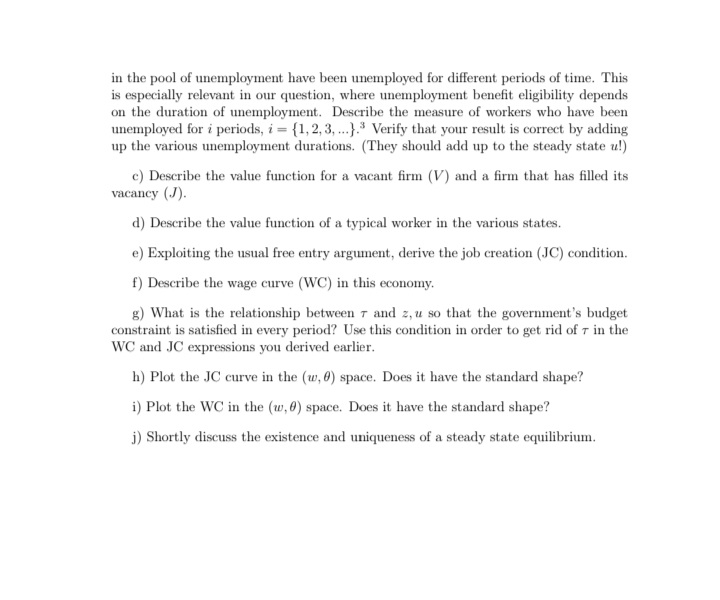
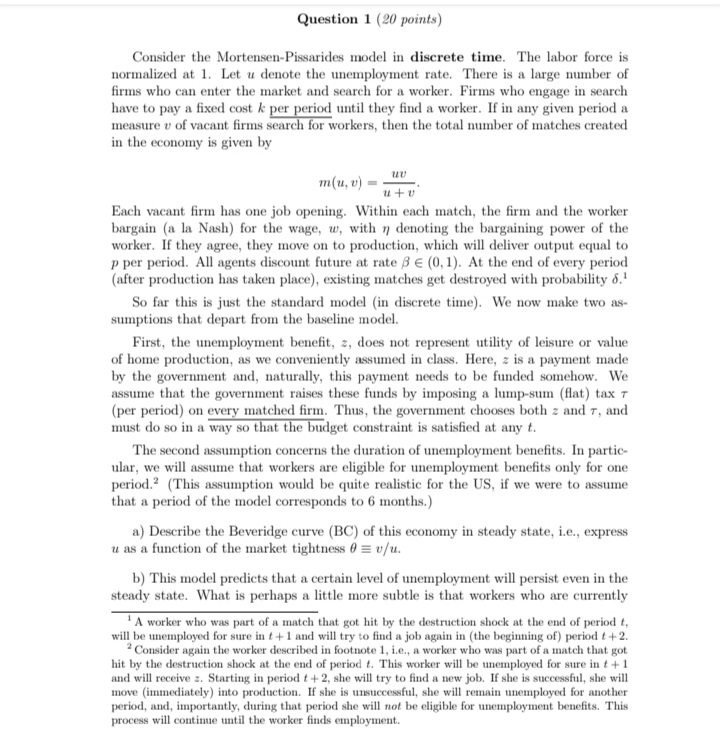
kindly explain thanks!
steady state: i, is the nominal interest rate, if, is inflation and f is the income tax rate." A is a function of model parameters, including the degree of price stickiness." Assume that or > 1, 0 0) in every equilibrium? If not, can you provide a condition on policy parameters that would guarantee => > 0?in the pool of unemployment have been unemployed for different periods of time. This is especially relevant in our question, where unemployment benefit eligibility depends on the duration of unemployment. Describe the measure of workers who have been unemployed for i periods, i = {1, 2,3, ...}.3 Verify that your result is correct by adding up the various unemployment durations. (They should add up to the steady state u!) c) Describe the value function for a vacant firm (V) and a firm that has filled its vacancy (J). d) Describe the value function of a typical worker in the various states. e) Exploiting the usual free entry argument, derive the job creation (JC) condition. f) Describe the wage curve (WC) in this economy. g) What is the relationship between r and z, u so that the government's budget constraint is satisfied in every period? Use this condition in order to get rid of r in the WC and JC expressions you derived earlier. h) Plot the JC curve in the (w, @) space. Does it have the standard shape? i) Plot the WC in the (w, @) space. Does it have the standard shape? j) Shortly discuss the existence and uniqueness of a steady state equilibrium.Question 1 (20 points) Consider the Mortensen-Pissarides model in discrete time. The labor force is normalized at 1. Let u denote the unemployment rate. There is a large number of firms who can enter the market and search for a worker. Firms who engage in search have to pay a fixed cost & per period until they find a worker. If in any given period a measure v of vacant firms search for workers, then the total number of matches created in the economy is given by m(u, v) = uv utv Each vacant firm has one job opening. Within each match, the firm and the worker bargain (a la Nash) for the wage, w, with n denoting the bargaining power of the worker. If they agree, they move on to production, which will deliver output equal to p per period. All agents discount future at rate B E (0, 1). At the end of every period (after production has taken place), existing matches get destroyed with probability 6.' So far this is just the standard model (in discrete time). We now make two as- sumptions that depart from the baseline model. First, the unemployment benefit, z, does not represent utility of leisure or value of home production, as we conveniently assumed in class. Here, z is a payment made by the government and, naturally, this payment needs to be funded somehow. We assume that the government raises these funds by imposing a lump-sum (flat) tax T (per period) on every matched firm. Thus, the government chooses both z and r, and must do so in a way so that the budget constraint is satisfied at any t. The second assumption concerns the duration of unemployment benefits. In partic- ular, we will assume that workers are eligible for unemployment benefits only for one period." (This assumption would be quite realistic for the US, if we were to assume that a period of the model corresponds to 6 months.) a) Describe the Beveridge curve (BC) of this economy in steady state, i.e., express u as a function of the market tightness 0 = v/u. b) This model predicts that a certain level of unemployment will persist even in the steady state. What is perhaps a little more subtle is that workers who are currently A worker who was part of a match that got hit by the destruction shock at the end of period , will be unemployed for sure in f + 1 and will try to find a job again in (the beginning of ) period f + 2. Consider again the worker described in footnote 1, i.e., a worker who was part of a match that got hit by the destruction shock at the end of period . This worker will be unemployed for sure in f + 1 and will receive z. Starting in period f + 2, she will try to find a new job. If she is successful, she will move (immediately) into production. If she is unsuccessful, she will remain unemployed for another period, and, importantly, during that period she will not be eligible for unemployment benefits. This process will continue until the worker finds employment


















